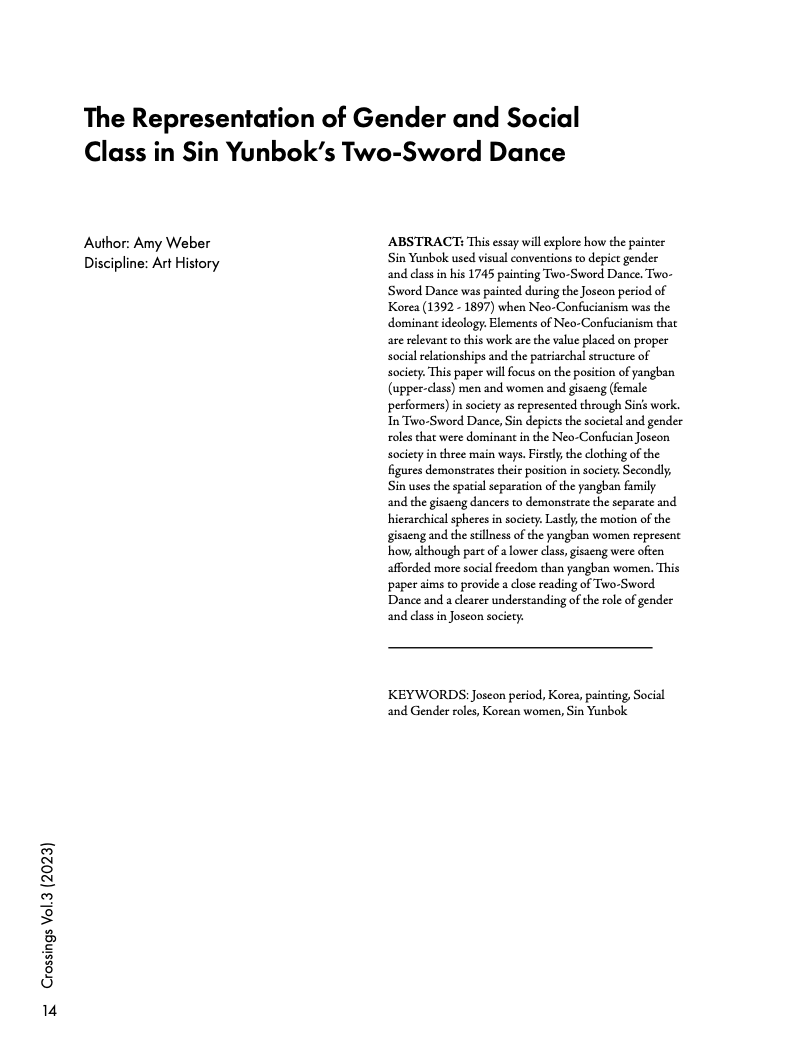The Representation of Gender and Social Class in Sin Yunbok’s Two-Sword Dance
DOI:
https://doi.org/10.29173/crossings136Keywords:
Korea, Korean women, Sin Yunbok, Joseon period, Social and Gender Roles, PaintingAbstract
This essay will explore how the painter Sin Yunbok used visual conventions to depict gender and class in his 1745 painting Two-Sword Dance. Two-Sword Dance was painted during the Joseon period of Korea (1392 - 1897) when Neo-Confucianism was the dominant ideology. Elements of Neo-Confucianism that are relevant to this work are the value placed on proper social relationships and the patriarchal structure of society. This paper will focus on the position of yangban (upper-class) men and women and gisaeng (female performers) in society as represented through Sin’s work. In Two-Sword Dance, Sin depicts the societal and gender roles that were dominant in the Neo-Confucian Joseon society in three main ways. Firstly, the clothing of the figures demonstrates their position in society. Secondly, Sin uses the spatial separation of the yangban family and the gisaeng dancers to demonstrate the separate and hierarchical spheres in society. Lastly, the motion of the gisaeng and the stillness of the yangban women represent how, although part of a lower class, gisaeng were often afforded more social freedom than yangban women. This paper aims to provide a close reading of Two-Sword Dance and a clearer understanding of the role of gender and class in Joseon society.

Downloads
Published
Issue
Section
License
Copyright (c) 2023 Amy Weber

This work is licensed under a Creative Commons Attribution 4.0 International License.

